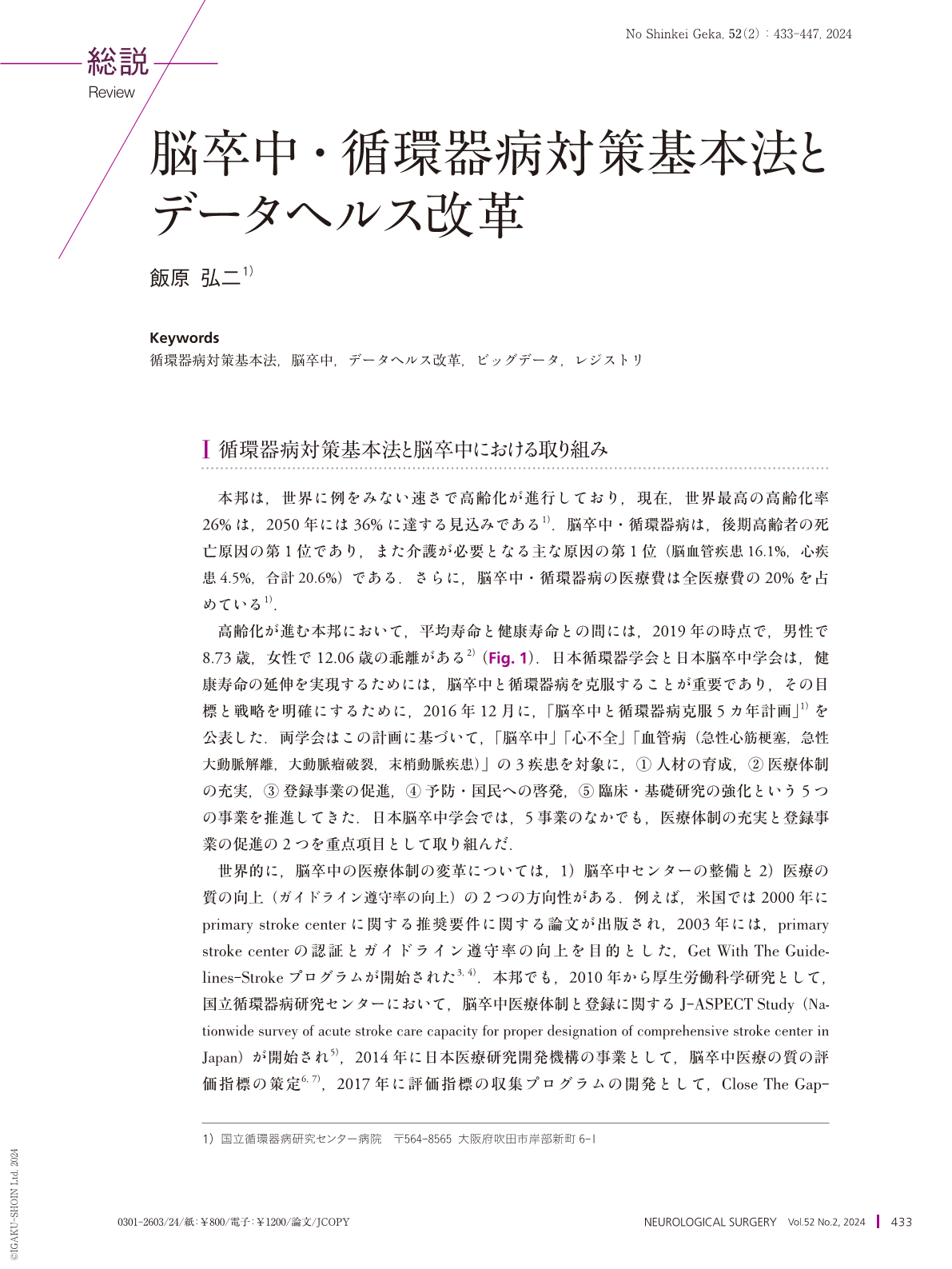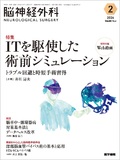Japanese
English
- 有料閲覧
- Abstract 文献概要
- 1ページ目 Look Inside
- 参考文献 Reference
Ⅰ 循環器病対策基本法と脳卒中における取り組み
本邦は,世界に例をみない速さで高齢化が進行しており,現在,世界最高の高齢化率26%は,2050年には36%に達する見込みである1).脳卒中・循環器病は,後期高齢者の死亡原因の第1位であり,また介護が必要となる主な原因の第1位(脳血管疾患16.1%,心疾患4.5%,合計20.6%)である.さらに,脳卒中・循環器病の医療費は全医療費の20%を占めている1).
高齢化が進む本邦において,平均寿命と健康寿命との間には,2019年の時点で,男性で8.73歳,女性で12.06歳の乖離がある2)(Fig. 1).日本循環器学会と日本脳卒中学会は,健康寿命の延伸を実現するためには,脳卒中と循環器病を克服することが重要であり,その目標と戦略を明確にするために,2016年12月に,「脳卒中と循環器病克服5カ年計画」1)を公表した.両学会はこの計画に基づいて,「脳卒中」「心不全」「血管病(急性心筋梗塞,急性大動脈解離,大動脈瘤破裂,末梢動脈疾患)」の3疾患を対象に,①人材の育成,②医療体制の充実,③登録事業の促進,④予防・国民への啓発,⑤臨床・基礎研究の強化という5つの事業を推進してきた.日本脳卒中学会では,5事業のなかでも,医療体制の充実と登録事業の促進の2つを重点項目として取り組んだ.
This review outlines the recent advances in stroke and cardiovascular diseases control and direction of national data health reform. Since the enactment of the Basic Act on Countermeasures against Cardiovascular Diseases, the national government and related academic societies have collaborated to promote countermeasures based on five key pillars; medical systems development, registration projects promotion, human resource development, public awareness, and research promotion. Simultaneously, the government is intensively promoting data health reform to compensate for the delay in digital medicine that became evident in the new coronary infection. Data health reform has four major pillars; promotion of using genomic medicine and artificial intelligence(AI), promotion of personal health records(PHR), promotion of information utilization in medical and nursing care settings, and promotion of effective database utilization. Five years have passed since the Basic Act on Countermeasures for Cardiovascular Diseases was enacted, and it is important that the Japanese Stroke Association, Japanese Cardiovascular Society and other related academic societies, government, prefectures, and National Cardiovascular Center collaborate to vigorously promote the cardiovascular disease countermeasures.

Copyright © 2024, Igaku-Shoin Ltd. All rights reserved.


